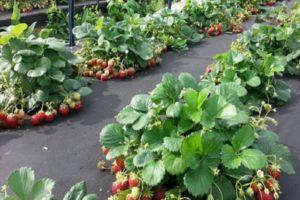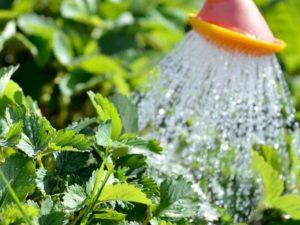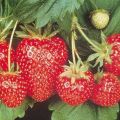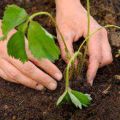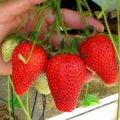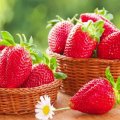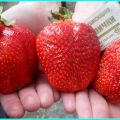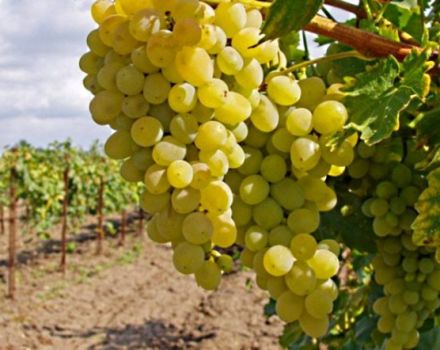Description of remontant strawberries of the Selva variety, planting and care
Neutral-day remontant strawberries are very popular among both breeders and ordinary gardeners. In Russia, among foreign varieties, Selva stands out. It has many advantages, but also not without its disadvantages. Today we will look at the description of the strawberry variety Selva and figure out how to grow this variety correctly in order to get a high-quality harvest.
Characteristics and description of the Selva variety
Selva is a remontant variety, which means the ability to bear fruit several times in one season. Strawberries grow in large, sprawling bushes, and their flower stalks can grow to a height greater than the stems. The weight of the berries is capable of reaching eighty grams.
Plant parameters
Bushes near Selva are spreading, broad-leaved. A large number of fruits grow on the stalk. One bush bears fruit up to five times during the growing season. The first berries ripen in late spring and early summer.
Selva bears fruit in waves. If you care for the plant properly, fruiting will occur three to four times in one season. Strawberries can produce a full harvest within three years. In the fourth year, the antennae may not even appear, so the beds should be rejuvenated every year.
Fruit characteristics
Ripe selva berries are bright red, some fruits have a pinkish tint. Strawberry fruits taste sweet and sour. The berries that appeared during the first wave of fruiting are large, and with the next waves the size of the fruits gradually decreases, but their number increases.
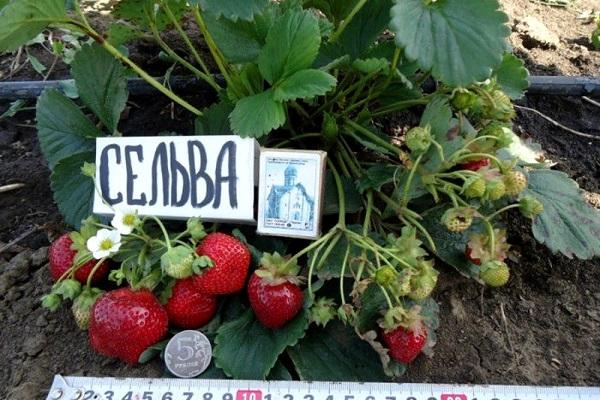
Frost resistance
The strawberry variety Selva is quite frost-resistant, the plant survives even in the harsh winter cold, but does not tolerate a long thaw. If Selva is grown in warm climates, the bushes are covered with straw or spruce branches. In cold conditions, better shelter, such as peat, will be required. Before mulching and covering the bushes with a peat layer, you need to let the strawberries get used to the frost in order to harden them.
Yield
Selva is a remontant strawberry variety, which means year-round fruiting.
Strawberries give their first berries at the end of May. Growth, flowering and fruiting in strawberries are not tied to daylight hours, and continue throughout the growing season. In protected ground, Selva bears fruit continuously, and in open ground - in waves, from three to five times per season.The main yield occurs in July and lasts until early-mid-autumn, until frost.
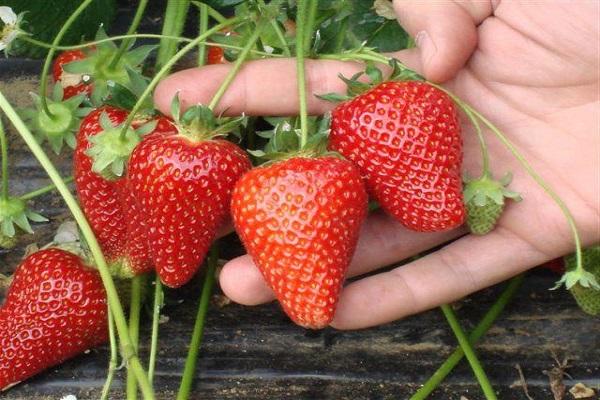
The most delicious berries are those that appear in the middle of summer. Fruits that ripen at the beginning of the summer season, in the first wave of fruiting, are often not sweet enough. It is recommended to remove them together with the peduncles in order to increase the yield of subsequent cycles.
Pest and disease resistance
One of the main features of this variety is its immunity to various diseases. He is not afraid of spotting, powdery mildew and gray rot, the leaves of Selva remain intact until autumn.
Pros and cons of strawberries
The main advantages of Selva, as mentioned above, are its resistance to cold and disease and high yield. Moreover, strawberries have a pleasant appearance. Large leaves and bright red berries can be great for decorating a garden area, so gardeners use Selva for decorative purposes.
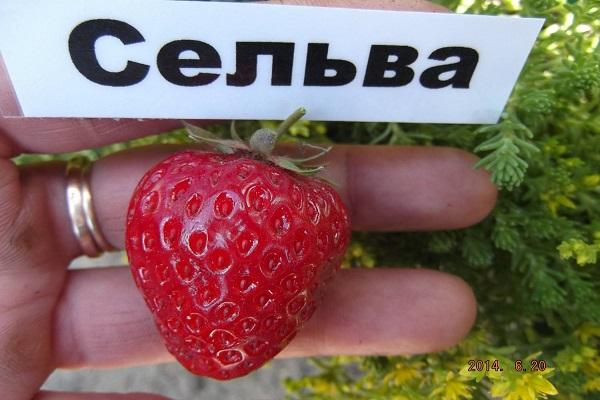
Of the shortcomings of this strawberry variety, berries are not sweet enough, sour in taste, which, with the age of the bush, lose their sweetness more and more, because of which the plant has to be changed at least once every three years.
Growing features
The yield of Selva is highly dependent on the correct growing technique. To obtain a large and high-quality yield, the plant should be provided with favorable conditions.
Drop off time
It is better to plant strawberries at the end of April, when warm weather is finally established, at a temperature of 18 degrees Celsius. It is recommended to plant the bushes closer to 17 o'clock in the evening, on warm soil.
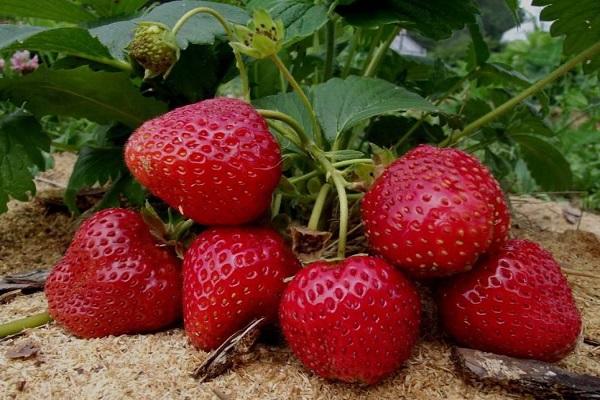
Site selection and soil preparation for planting
For planting Selva bushes, soil is suitable containing the same amount of sand and clay. Choose a lighted area so that the strawberries get enough warmth and produce a timely harvest.
The site must be dug to a depth of 30 centimeters, loosening the soil. When digging strawberry holes, use only natural fertilizers. 10 kilograms of manure with peat is suitable per square meter. The distance between the holes should be, on average, 30 centimeters, and when planting in several rows, keep a gap of 50 centimeters.
Planting strawberries
Selva are planted with whiskers, seeds or bush separation. For transfer to the soil, a plant with developed roots and four leaves is taken. To avoid drying out the plant, make sure that the bud does not stay in the ground. Pour a small amount of water into the prepared hole, place a bush there and press down the straightened roots with earth, then pour the strawberries again.
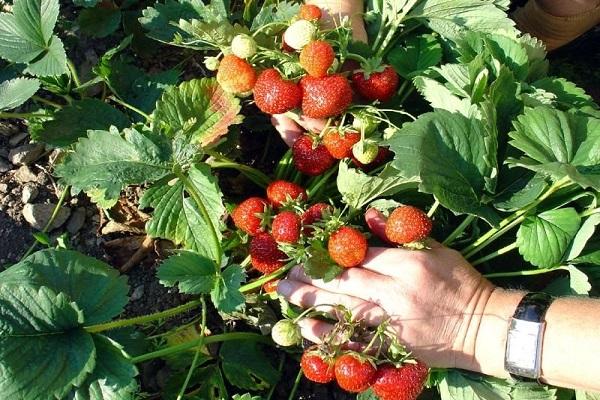
At the initial stage, the plant is watered abundantly, up to several times a day, until it finally takes root.
The subtleties of plant care
An important role for the cultivation of Selva is played by planting and competent care of the plant throughout its entire life cycle.
Air temperature
If strawberries grow at too hot air temperatures, the plant should be mulched with hay or straw. In the southern regions, it is better to keep the bushes in partial shade. Covering the plant with a film helps from cold temperatures.
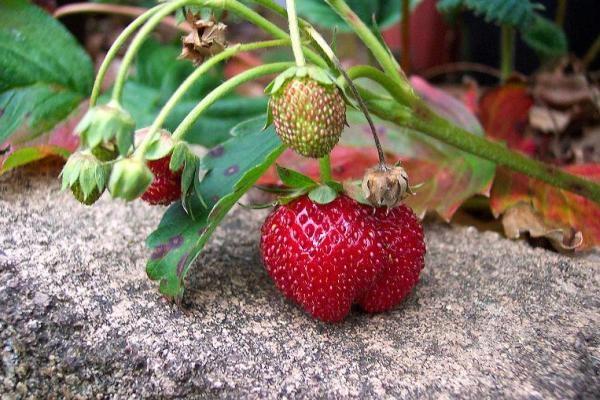
Watering
At first, after planting, strawberries are watered several times a day. After the plant has taken root, the watering rate should be reduced, since excess moisture will negatively affect the taste and quality of the berries. It will be enough to water the bushes 1-2 times a week. Loosen the soil after watering to provide sufficient oxygen to the roots.
Fertilizers
Selva must be regularly fed with mineral and organic fertilizers during flowering and fruiting. Fertilize at least three times per season.
Mulching strawberries
Mulching, that is, covering the soil between the bushes with different materials, will help minimize damage to the berries and will make it possible to water the bushes less often than usual. For this, agrofibre is suitable, with which the bed is covered before planting, as well as hay or straw. Do not cover the bushes themselves with material, carefully cover the soil between the bushes with a 15-centimeter layer.
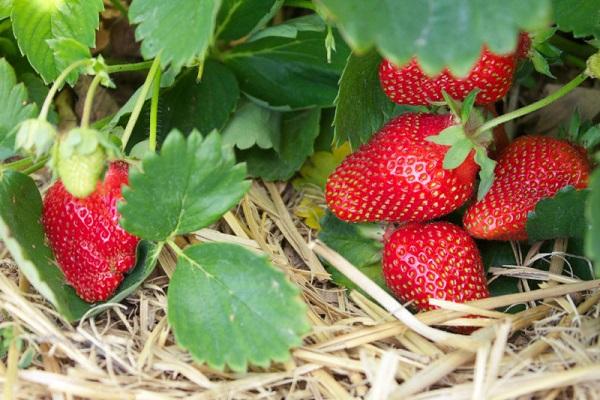
Wintering conditions
Selva tolerates cold well, so in warm regions it is enough to cover it with a layer of hay, straw or non-woven material. In regions with a cold climate, the soil must be mulched and sprinkled with a thick layer of humus or peat.
Disease protection
Despite the fact that Selva is immune to many diseases, one should not forget about plant protection. During the cultivation of bushes, you need to observe them in order to identify pests in a timely manner. Strawberries are especially susceptible to attack by strawberry mites and weevils.
It is advisable to treat the plant from pests with the help of folk remedies, since strawberries constantly bear fruit. Infusions of wormwood, tobacco and soap are excellent help.
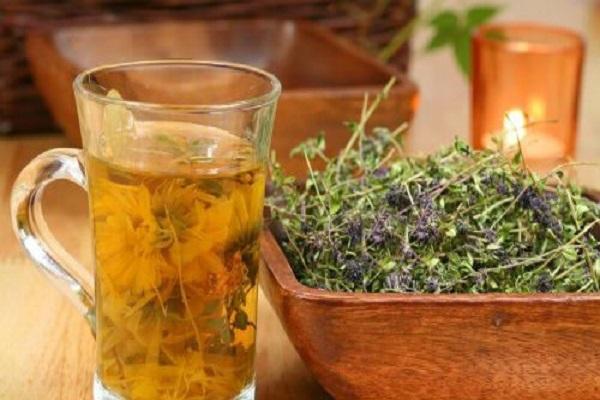
Breeding types
Due to the fact that the remontant strawberry Selva bears fruit all year round, it becomes severely depleted over time and reduces its ability to produce a quality crop. Therefore, every year, the procedure for breeding bushes should be performed.
There are several ways to breed:
- Dividing a bush - dividing one strawberry seedling into two or three. This is one of the best ways to maximize plant characteristics.
- Seed propagation - this method is quite laborious and does not always give a good result, since strawberries planted by seed usually have rather weak shoots.
- Mustache propagation is the easiest and most optimal way. You just need to sprinkle the strawberry mustache with a small amount of earth, and after a while it forms a seedling that will need to be transplanted.
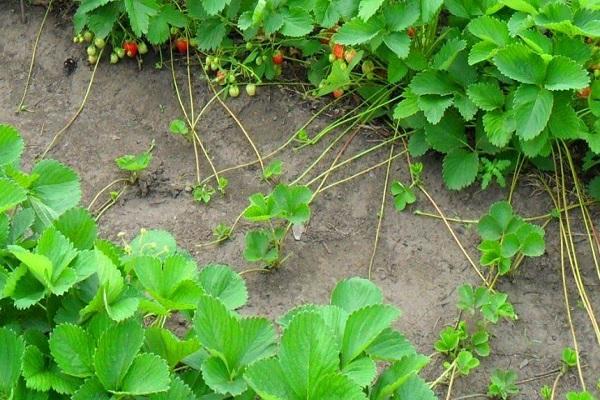
Cleaning and storing strawberries
Harvesting ripe strawberries from bushes is best when they are dry. Spoiled berries must also be picked so that they do not infect neighboring fruits. Remove the berries that appeared in the first wave along with the peduncles.
Fresh strawberries should not be stored at room temperature, as they will ferment and mold. You need to store it in the refrigerator, at temperatures up to plus six degrees, in plastic or glassware. It is better if it is not closed tightly to provide oxygen to the fetus. For long-term preservation, strawberries can be frozen in the freezer, in a container with sugar.
